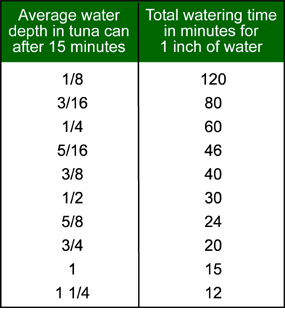Grass is the most durable plant for traffic areas, but it also
requires the most water. In fact, water consumption can be 10
times greater in the summer due to irrigation.
In addition,
grass does not take care of itself; it is the most labor
intensive part of your landscape. Evaluate your lawn needs and
consider replacing unused grass with decks, patios and
water-wise plants.
A breath of fresh air
Punch holes in your lawn if it is compacted by traffic or the
soil is heavy clay. Sprinkle sand and/or compost over the area.
Adding grass seed will build up the turf with desirable
species.
Remove thatch
Thatch is last year's dead stems and roots. If it is over
½ inch deep it can prevent air, water and nutrients from
reaching the ground. Remove it with a sturdy rake or rent a
power thatcher.
Mow, but not too much
Mow often, but don't cut shorter than 2 inches. The longer
grass will shade the roots and retain moisture. Keep your mower
blades sharp.
Mulch
The fine grass clippings will act as mulch to retain moisture.
As it breaks down, it will form a natural fertilizer that can
meet a quarter of your lawn's nutrient needs.
Dormant, not dead
In very hot, dry spells, grass may turn brown as it goes
dormant. It will recover with cooler weather and higher
humidity.
The right amount of water
Overwatering will cause diseases and loss of nutrients from
your lawn. Design a system that waters evenly and deeply.
Watering thoroughly, but infrequently, makes roots grow deeper
and more drought resistant. Grass is best watered with
sprinklers that deliver large drops of water close to the
ground. Overlap the sprinkler patterns for good coverage.
Adjust your watering to compensate for changing seasons and
weather conditions.
To keep a lawn healthy in spring and fall, 1½ inches of
water per week is sufficient. When temperatures exceed 85
degrees, increase watering to 2 inches or more. This amount of
water should penetrate 6 inches into the earth. Check
periodically and adjust the schedule accordingly.
Sprinkler Test
 Use this easy method to determine the amount of
water your sprinklers provide:
Use this easy method to determine the amount of
water your sprinklers provide:
- Set out five empty tuna-type cans from the sprinkler to the
edge of its spray pattern.
- Turn on the sprinkler for exactly 15 minutes.
- Measure the depth of water in each can and add up the
numbers. Divide by 5 to get an average depth.
- On the chart, find the average water depth in tuna can
after 15 minutes. To the right is the total watering time in
minutes for 1 inch of water.